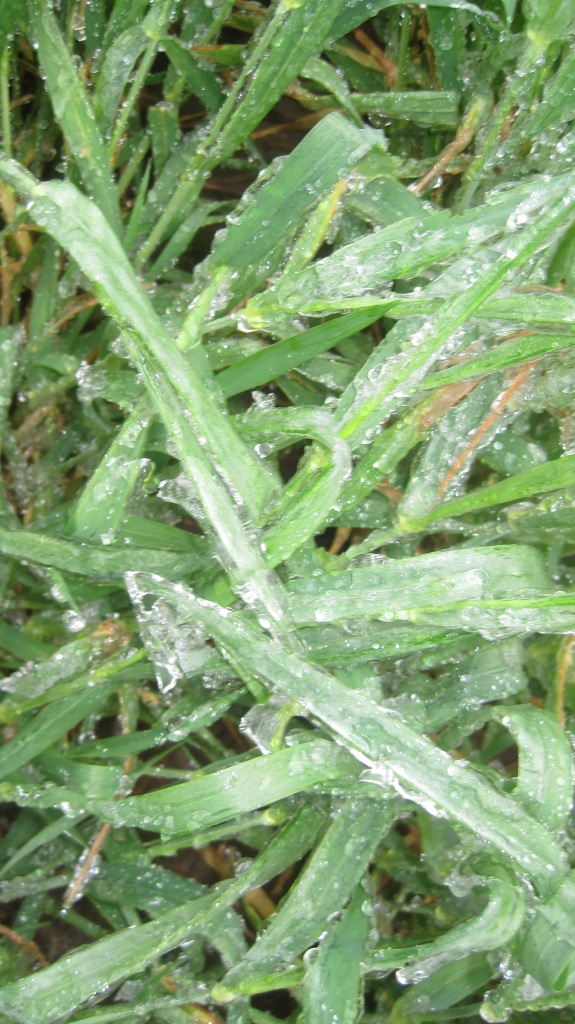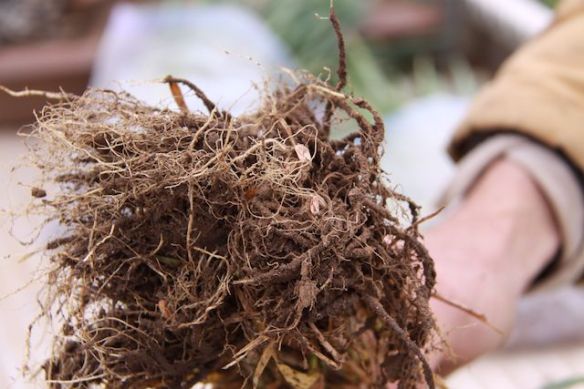By Dr. Bob Hunger, OSU Extension Plant Pathologist
My counterpart in Arkansas, Dr. Gene Milus (University of Arkansas), just sent out an important message about being careful to not exceed the maximum amount of a fungicide applied to a crop in a single year. Such a consideration could be an issue where more than one fungicide application is made. This is especially true if a generic of tebuconazole is applied, as this chemical also is in Prosaro; however, multiple applications of the same fungicide may also exceed the maximum amount of chemical that can be applied in a single year. Reading the label is the best place to determine the maximum amount of a chemical that can be applied in a single season and the exact amount of a chemical(s) that is in a fungicide. A quick reference to what chemicals are in the typical fungicides used on wheat in Oklahoma is the OSU Current Report (CR-7668) that Dr. Jeff Edwards and I recently updated (available at www.wheat.okstate.edu)
In Arkansas and many states through the mid-western region of the U.S., two or even three fungicide applications on wheat are more common, with the last application typically targeted toward Fusarium head blight (scab). In Oklahoma, where scab usually is not a concern, deciding to apply one fungicide application typically has been the only consideration. However, in recent years making two fungicide applications have become more common because of higher wheat prices, lower cost of fungicides, and increased no-till wheat acres that favor early diseases such as powdery mildew, tan spot, and septoria/stagonospora. It is in these situations that care must be taken to insure label compliance. The following message from Dr. Milus addresses this point. The report below is also at http://www.arkansas-crops.com/ along with other ag news from Arkansas.
Given the early onset of stripe rust and the cool rainy weather in recent weeks, some wheat growers are considering two or three fungicide applications. This is a new phenomenon for Arkansas growers and requires some planning to stay within the legal limits for total amounts of particular fungicides that can be applied to wheat fields. The fungicide label lists to total amount of each active ingredient that can be applied per acre per year. These amounts usually are given in pounds of active ingredient (lb ai) which require some math to translate into fluid ounces (fl oz) of particular products. The total amounts and usual application rates below are for fungicides most likely to be used in Arkansas.
Tebuconazole: total amount = 0.11 lb ai/A = 4 fl oz/A.
Products containing only tebuconazole include Folicur (no longer being sold), Orius, Tebucon, Tebustar, Tebuzol, Tegrol, and Toledo.
Prosaro: total amount = 8.2 fl oz /A = 0.11 lb ai each of prothioconazole and tebuconazole.
(Note that no Prosaro can be applied if 4 fl oz of a tebuconazole product was applied earlier because Prosaro is half tebuconazole.)
Propiconazole: total amount = 0.22 lb ai/A = 8 fl oz/A.
4 fl oz/A = 0.11 lb propiconazole.
Products containing propiconazole include Tilt, Bumper, Fitness, Propiconazole E-AG, and PropiMax
Quilt Excel: total amount = 28 fl oz/A = 0.22 lb propiconazole + 0.26 lb azoxystrobin
14 fl oz Quilt Excel = 0.11 lb propiconazole + 0.13 lb azoxystrobin.
(Therefore 4 fl oz of a propiconazole product + 14 fl oz of Quilt Excel can be legally applied.)
Pyraclostrobin (Headline): total amount = 18 fl oz/A = 0.29 lb ai/A
9 fl oz = 0.147 lb Pyraclostrobin (Note the slight discrepancy between the total amounts expressed as fl oz/A and lb ai/A.)
Metconazole (Caramba): total amount = 34 fl oz/A = 0.20 lb ai/A
17 fl oz = 0.10 lb Metconazole
Twinline: total amount = 18 fl oz/A = 0.10 lb metconazole + 0.15 lb pyraclostrobin
9 fl oz/A = 0.05 lb metconazole + 0.076 lb pyraclostrobin
(Note the discrepancies for total amounts metconazole and pyraclostrobin depending on which products are used.)












